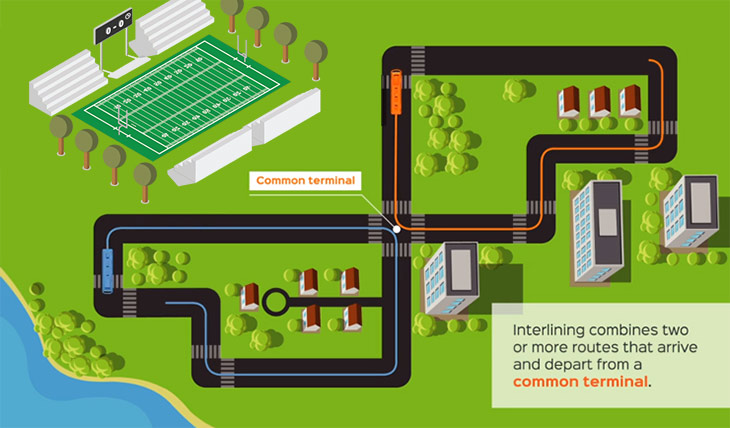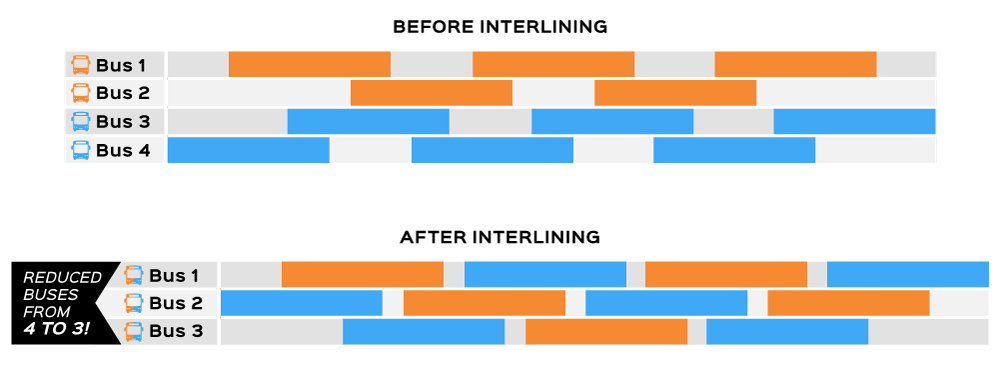Universities Save Money and Get Better OTP with Bus Interlining

What is interlining?
Interlining is a common practice in the transit industry that combines two or more independent routes that arrive and depart from a common terminal. For example, a bus can arrive at a stop on a university campus on one route and after a brief layover, leave on a different route. When the bus leaves on its new route, the head sign and automated announcements get updates seamlessly. Interlining eliminates extended periods of down time where a bus would just be parked and out of service.
Watch the video below for an overview
The benefits of interlining
- Better use of resources: Interlining allows universities to deliver the same level of service with fewer vehicles and drivers
- Better for the environment: Interlining reduces extensive layovers and the resulting gas consumption
- Better on-time performance (OTP): Interlining absorbs occasional expected delays in less reliable routes, helping to keep buses on-time
- Better for drivers: If one route has plenty of time in its schedule, while another can be tight at times, interlining the two routes helps ensure drivers have sufficient layovers. Additionally, driving multiple routes adds variety, and with electronic paddles and advance turn alerts, variety doesn’t mean drivers have to memorize multiple routes
- Greater passenger convenience: Interlining routes can minimize the need to transfer. When two routes overlap, interlining allows riders to remain on the bus for the duration of their trip
What do the numbers say?
Based on industry averages and best practices, there are some surprising savings for universities who implement interlining, for even just two routes.

In the example above, before interlining, four vehicles and drivers were required to serve the Orange and Blue routes. By interlining these two routes, only three vehicles and drivers would be required to deliver the same level of service.
How much would a university theoretically save in this example? Assuming that a bus operates 19 hours a day, 6 days a week at an average operating cost of $140/hour, this would eliminate the need for one bus and result in operational savings in excess of $800,000 per year!
Streets supports interlining
Using Streets visual blocking and run cutting tool makes it easy to identify opportunities for interlining. Head sign integration ensures that signage always reflects the correct route and passenger information is reliable. And lastly, Streets makes sure universities are still getting accurate mileage, ridership, and time data for each route.
Win-win-win for all
When interlining is supported by accurate data and solid scheduling, it benefits the university, the drivers, and the riders. It’s a rare case of win-win-win.


